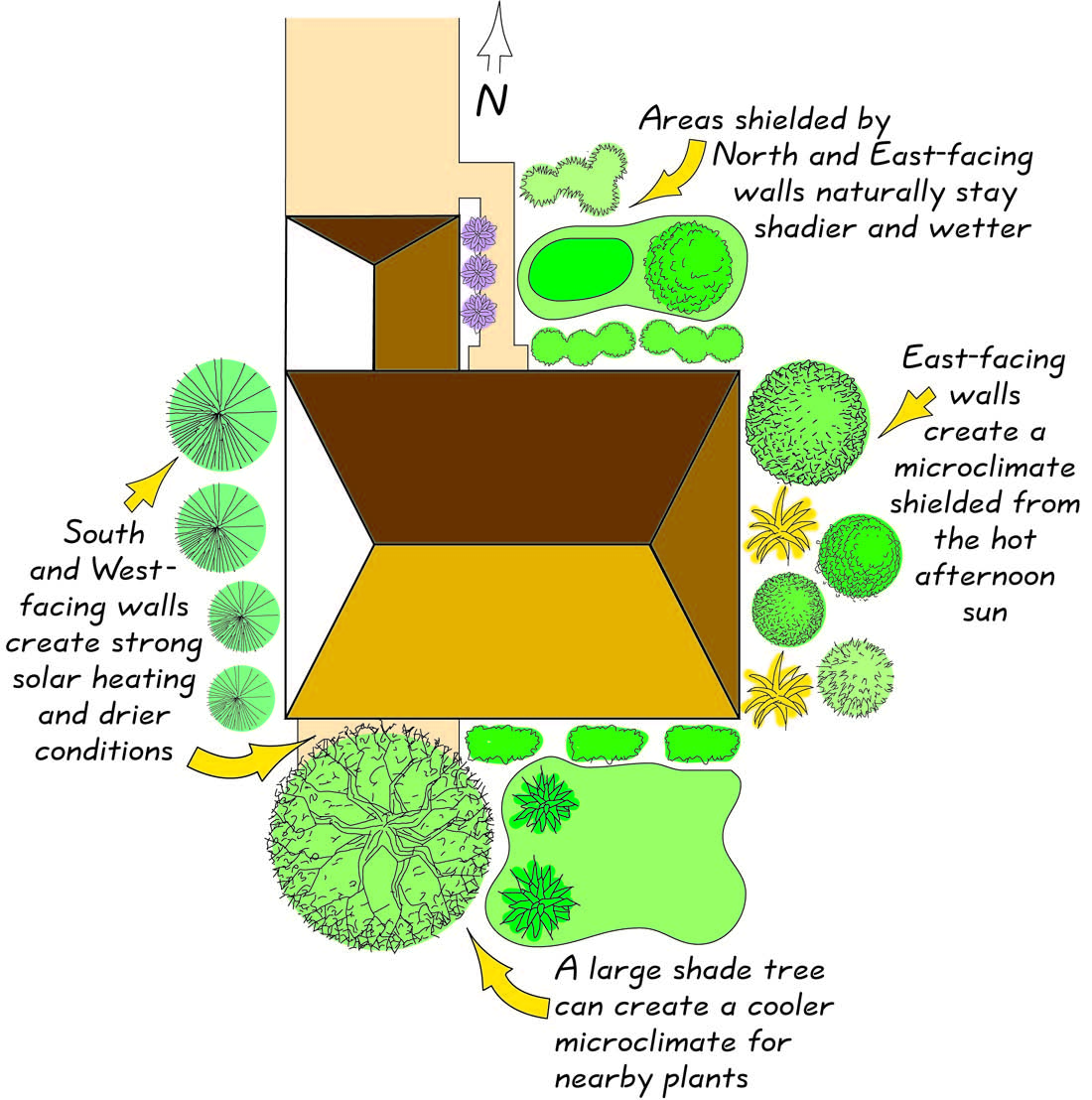The PermaDesign Weblog, with Nate Downey and Melissa McDonald!
Roof-Reliant Landscaping™ Step 3: Use Low-Water Plants
Choosing appropriate plants for your local area and for the specific conditions on your property is a key element in creating a roof-reliant landscape. For example, the range of waterwise plant options near Red Bluff Reservoir (elevation just under 3,000 feet) in southern New Mexico is very different from the plant palette for the village of Truchas (elevation just over 8,000 feet) in northern New Mexico. Local plant nurseries, landscape designers and other landscape professionals, horticulturists, native plant societies, local master gardeners and county extension agents can be invaluable resources for information about the types of plants that are appropriate for your landscape.

To conserve water, choose native and low-water-use plants whenever possible. Understanding the particular needs of your plants is also crucial. Soil conditions, sunlight requirements, water and spatial needs (i.e., the sizes and shape of root zones and branching habits) will all affect the long-term success of your roof-reliant landscape.
Xeriscaping uses the concept of plant “zoning” or grouping. By grouping plants with similar water needs together in specific “zones,” the landscape can use water more efficiently. Low-water-use plants should be grouped together, away from the highwater- use plants. (See page 41 for a complete description of plant zoning.) Also, take advantage of warm or cool “microclimates” (the small areas of different climatic conditions around a property that typically occur near walls, shade trees, etc.).
Using microclimates as places to group plants with similar needs is a great way to create areas of interest and diversity in the landscape.
Microclimates are small areas in a landscape that typically occur near walls, underneath shade trees or by another landscape feature.
From a plant-choice standpoint, other kinds of useful information come into play, too. Is a particular tree species a shade tree or an ornamental tree? Does a species of flowering perennial bloom in spring, summer or fall? Will this shrub grow tall enough and densely enough to block the wind when you are sitting at a table on your patio? Will this flower’s fragrance make you smile or sneeze?
A roof-reliant landscaper must also consider these additional plant characteristics: (1) whether a species can be established in three to five years, (2) whether a species will typically, once established, bounce back from drought and (3) whether a particular species can survive with precipitation water only. The Office of the State Engineer is developing a statewide xeric plant list, Waterwise Plants of New Mexico, that will be helpful in this regard. Email waternm@state.nm.us or visit http://www.ose.state.nm.us (click on Water Use and Conservation).
09/02/2015 | (0) Comments










Comments